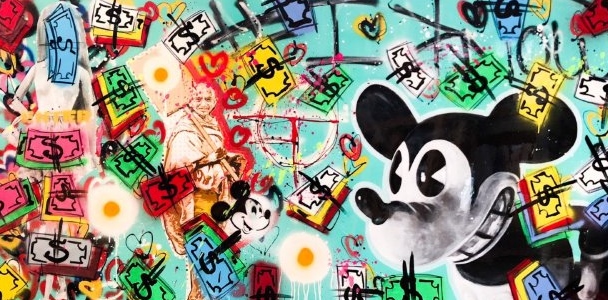
News

Anonymity has some Fringe benefits
SIMON SHEER
The answer can be found at Daville Baillie Gallery, located in Joburg’s trendiest new urban development, Victoria Yards. Or, at least it will be until 29 September, when you can catch the new exhibition titled Don’t Blink, by the artist known simply as Fringe.
So, who is Fringe? The short answer is we don’t know.
Rather than distract us with tales of his personal life, Fringe presents us with just a persona and the work. He explains, “My anonymity has allowed me to explore this even further, and to relay a message without knowledge of who the messenger is. In other words, I wanted people to focus on what was being said, and not on who was saying it.”
As an audience, the anonymity also liberates us to form our own impressions and interpretations. Fringe is emphatic on this point. The meaning of the work that really counts is the meaning we, the audience, perceive or create: “Meaning is irrelevant. I want you as the viewer to attach a meaning. My works mean one thing to me, but that should not influence the viewer. I want everyone to draw their own conclusions.”
The artist’s persona also adds a nice layer of mystery to the exhibition. Is Fringe himself just another brand to be depicted in his own work?
But we are not wholly in the dark. Here’s what we do know. Fringe was born in Johannesburg, and studied marketing in Cape Town. After a decade working in the Cape Town ad scene, he moved to New York.
Perhaps the transition from the sleepy comfort of the “Mother City” to the “City that Never Sleeps” inspired the themes of Don’t Blink, which Fringe describes as “my analysis of life and its supremely fast pace. If we blink, we miss.”
In recombining the popular forms of modern life, the exhibition seeks to celebrate, rather than critique. The tone is relentlessly upbeat. “I’m not suggesting that any of that is negative,” Fringe says, “I’m just helping to capture life in my paintings, so there’s a timeline or story being told across the works.”
For all the works’ contemporary symbols and methods, then, the exhibition harks back to early-modern painters, who made it their life’s work to capturing a fleeting moment in time.
Probably this is no accident. There’s a vein of nostalgia running through the exhibition. It’s present in the gallery’s vivid description, “Don’t Blink is a mind bending journey through the characters and charades of youth, reminding us that, however old, we can all be happy children.”
Of course, nostalgia doesn’t simply emerge. Don’t Blink is made compelling by the reworking of iconography and blending of techniques, the pleasure of recombining elements of pop influences and techniques. Nostalgia isn’t really about recovering the past, it’s about reimagining the present. In this case, we are encouraged also to imagine a brighter future. The work, Fringe insists, is designed to invoke joy.
The works’ seductive surfaces, realised through careful technique, have attracted the attention of collectors. Following his debut solo exhibition at the Daville Baillie Gallery in 2017, Fringe has acquired a European agent, generating a buzz amongst international art buyers.
This has allowed Fringe to take the plunge and move into producing art full time. “The weird thing is that I always worry that there aren’t enough ideas spinning around in this head of mine, but somehow, I believe that a positive imagination is uncontained, and if I can bring a smile to my face, I know I can do it to you too.”




